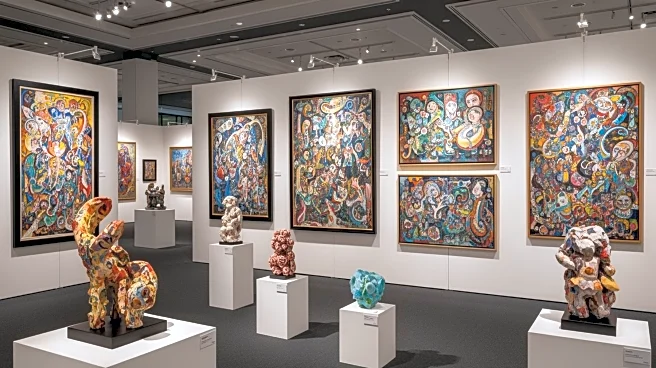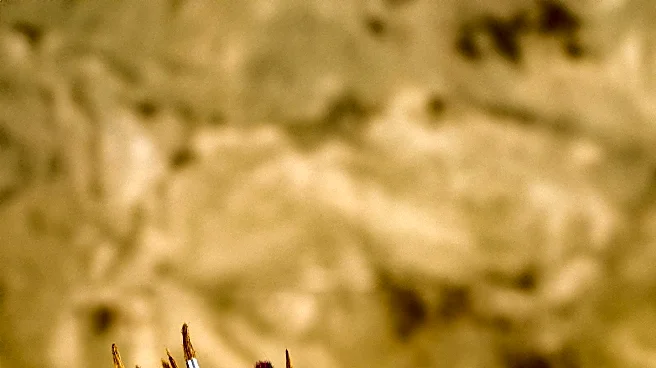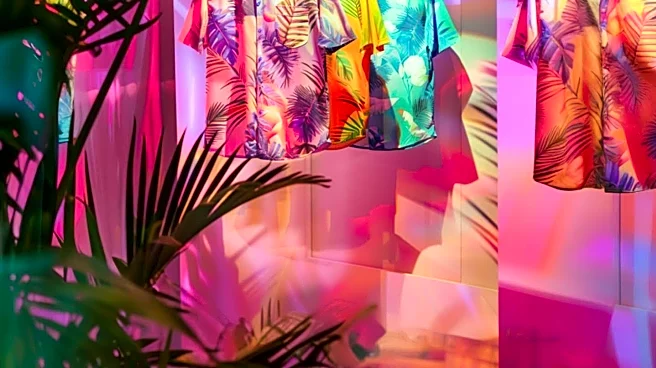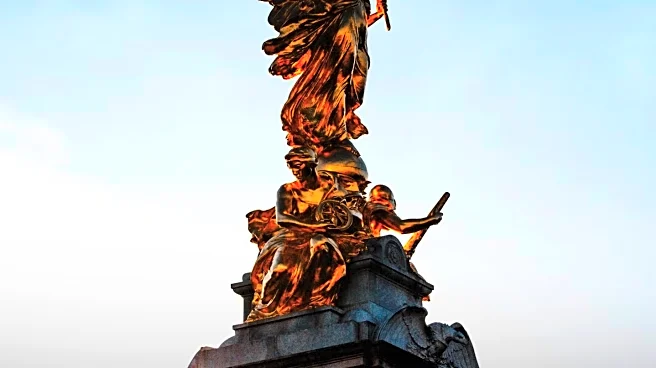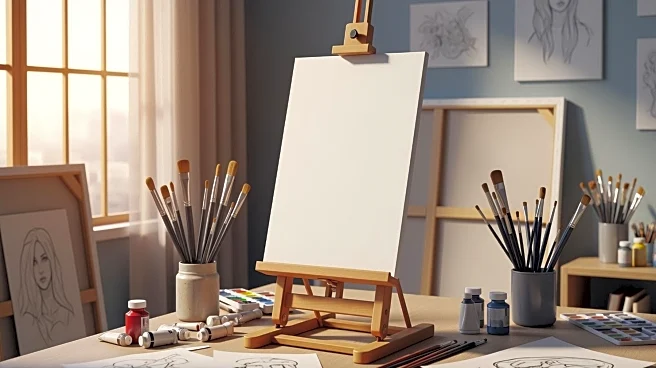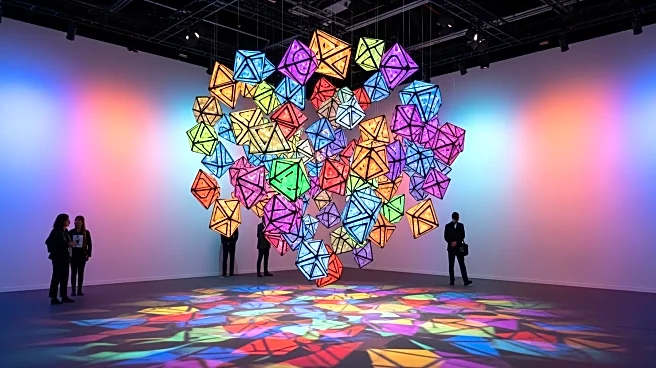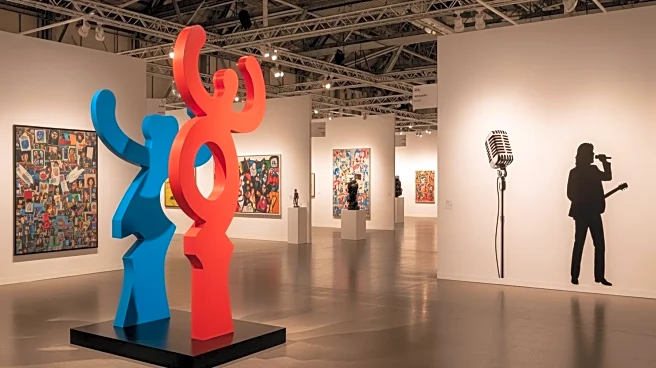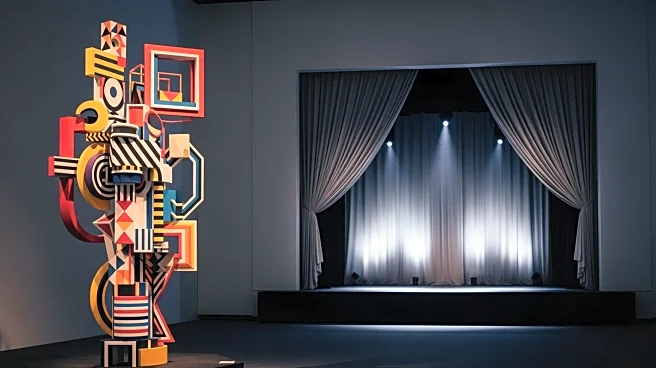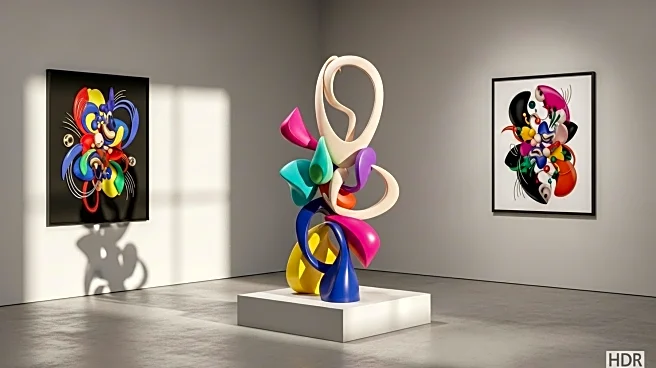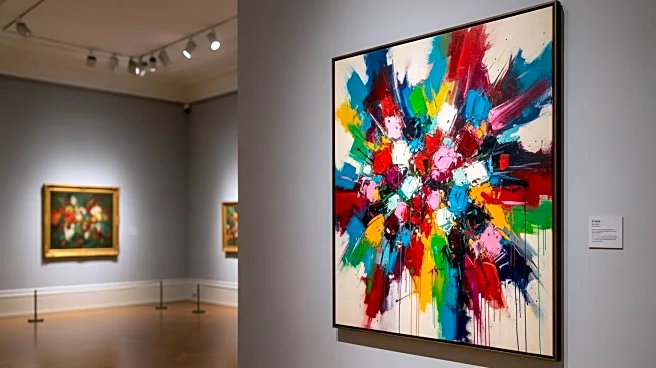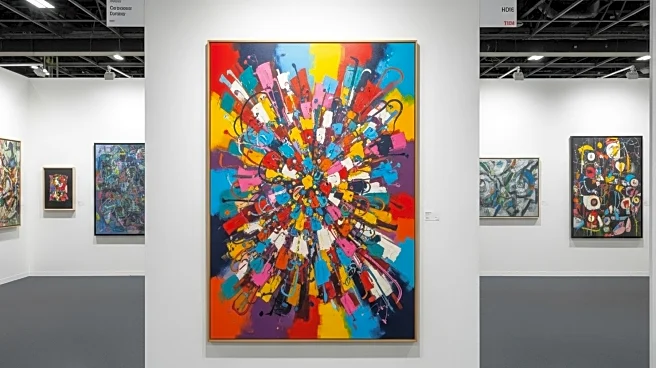What's Happening?
Glenn Brown, an artist known for his reinterpretations of historical and contemporary artworks, is expanding the exhibition hours of The Brown Collection in Marylebone during Frieze Week. The museum, which
opened three years ago, will feature the exhibition 'Hoi Polloi,' showcasing how ordinary people have been represented in art from the 16th century onwards, alongside Brown's related works. Brown's approach involves appropriating and combining other artists' works into his paintings, a method he openly credits. Additionally, Gagosian is presenting an installation by Brown at Frieze Masters, featuring new paintings, drawings, and a sculpture. Brown's exhibition at the Freud Museum in north London, titled 'The Sight of Something,' continues to display works in dialogue with the museum's collection.
Why It's Important?
The expansion of The Brown Collection's exhibition hours during Frieze Week highlights the growing interest in art that reinterprets historical works. Brown's unique approach to art, which involves transforming heavy brushwork into meticulously flat surfaces, challenges traditional perceptions of art and encourages viewers to engage with the reinterpretation of familiar images. This development is significant for the art community, as it underscores the importance of accessibility and public engagement with art. By extending the exhibition hours, Brown is providing more opportunities for the public to experience his work, potentially influencing contemporary art trends and inspiring other artists to explore similar methods of reinterpretation.
What's Next?
As Frieze Week progresses, The Brown Collection's extended hours may attract a larger audience, increasing public interest in Brown's reinterpretative art style. The exhibition 'Hoi Polloi' could spark discussions on the representation of ordinary people in art, influencing future exhibitions and artistic explorations. Brown's continued collaboration with institutions like the Freud Museum may lead to further exhibitions that challenge traditional art narratives. Additionally, the environmental impact of art fairs, as noted by Brown, may prompt organizers to implement more sustainable practices, potentially setting new standards for future events.
Beyond the Headlines
Brown's approach to art raises ethical questions about appropriation and the transformation of existing works. His method of giving credit to the original artists while creating new interpretations may influence discussions on intellectual property and artistic ownership. The environmental concerns associated with art fairs, highlighted by Brown, could lead to broader conversations about sustainability in the art world, encouraging artists and organizers to adopt eco-friendly practices. These discussions may contribute to long-term shifts in how art is produced, exhibited, and consumed.
